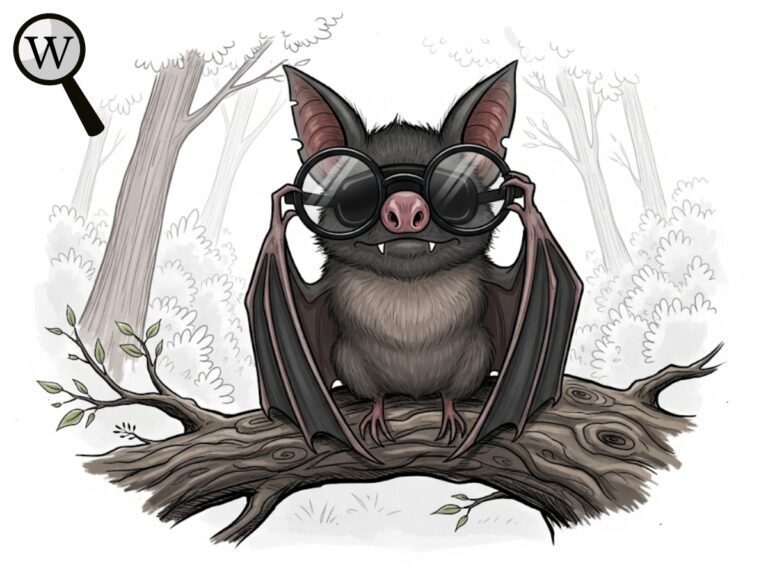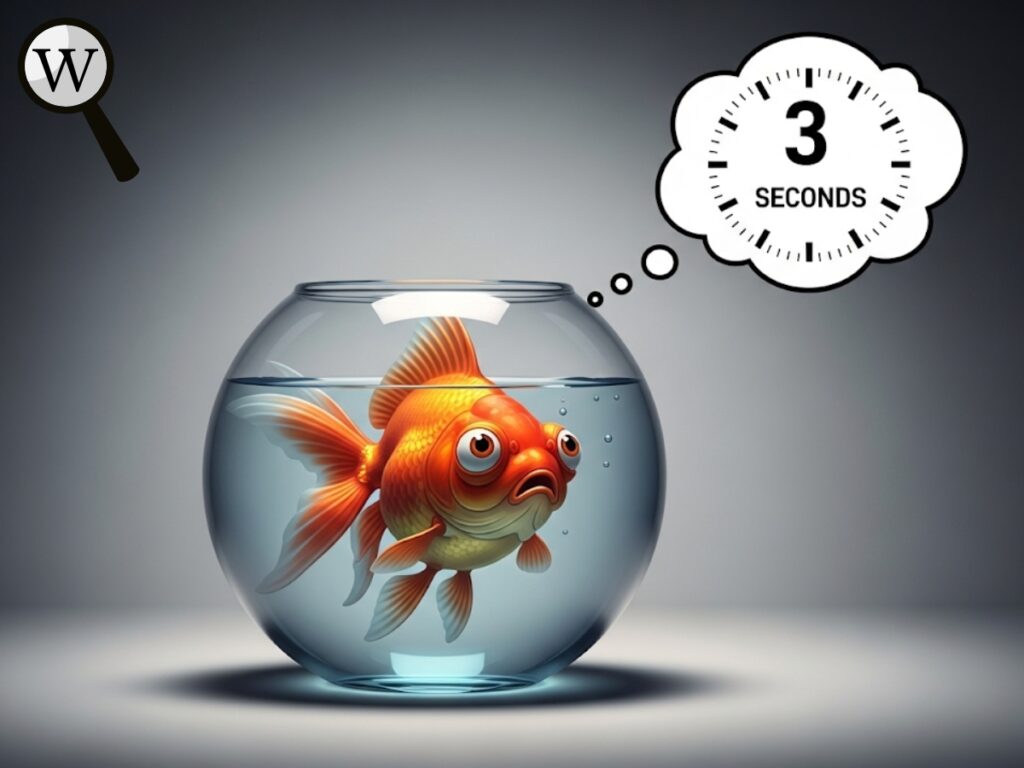
You’ve probably heard it a hundred times: “Goldfish only remember things for 3 seconds.”
Sounds funny, right? Maybe even a little relatable…
But what if we told you that this widely shared fact is actually a myth — and that goldfish have memory skills that might surprise you?
Let’s dive in (pun intended) and clear the water on this one. 🐟
Table of Contents
Is the Goldfish Memory Myth Actually True?
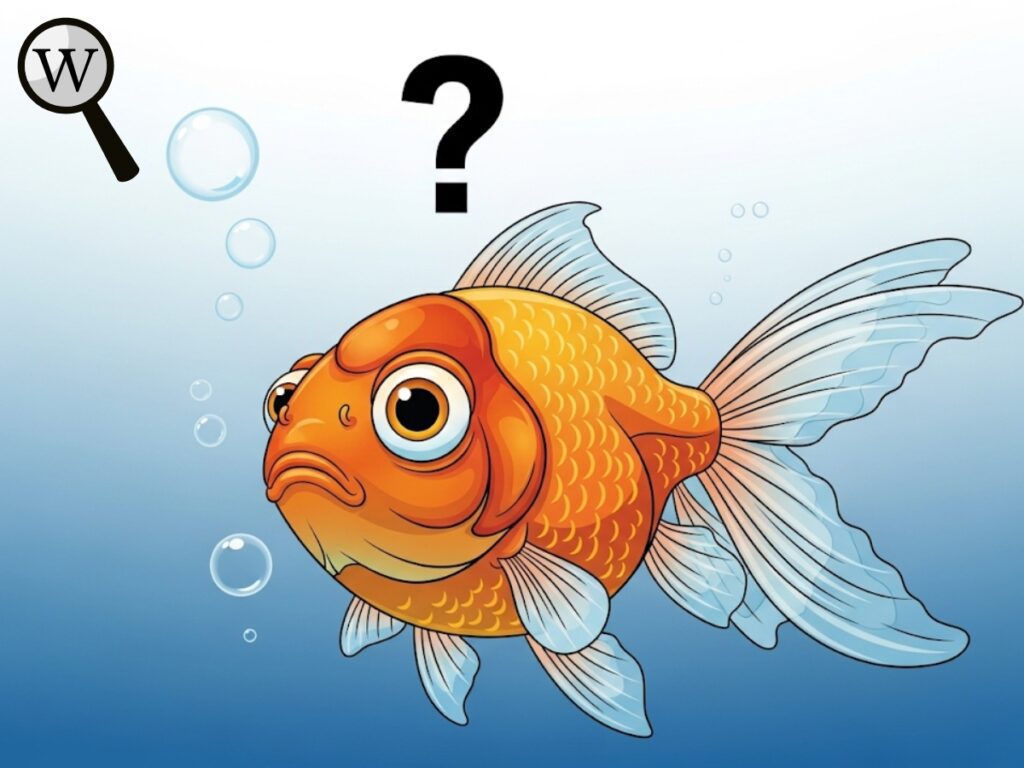
Let’s bust this once and for all: No — goldfish do not have a 3-second memory.
This idea is one of the most well-known (and most wrong) myths in the animal kingdom. While it might make for a funny joke or a way to tease someone for being forgetful, science tells a completely different story.
Goldfish actually have impressive memory skills, especially when compared to what we expect from such a small, quiet pet. In fact, research has proven that they can remember things for days, weeks, and even months — not seconds.
So, if you’ve ever been told your goldfish forgets who you are the moment you walk away from the tank… well, that fish probably remembers you just fine.
🧪 What Science Says About its Memory
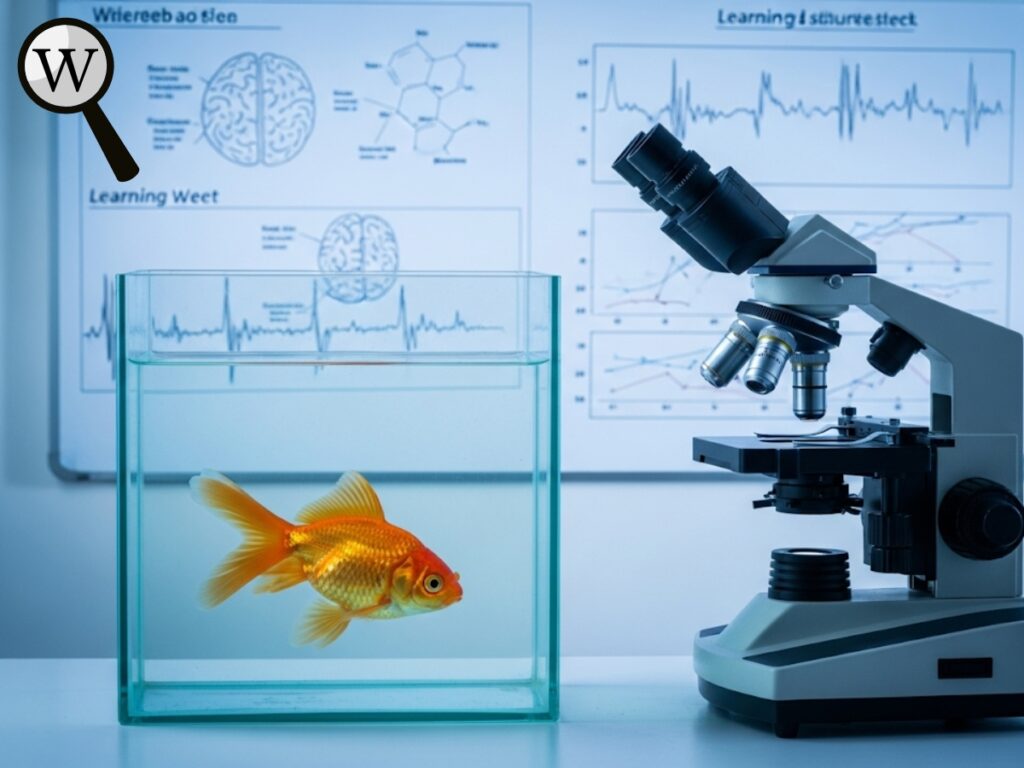
Scientific studies on their behavior have shown remarkable results that directly challenge the myth.
For example:
🧠 They can be trained. These fish are capable of learning to press levers for food, swim through mazes, and respond to specific visual cues. Once taught, they can retain this knowledge for several weeks — a clear sign of long-term memory at work.
🔊 They associate sounds with actions. A notable study conducted at Plymouth University in the UK showed they could connect a particular sound with feeding time. Even after a long break, they still responded to the familiar sound by swimming toward the expected food.
🎨 They recognize colors and shapes. These aquatic learners can distinguish between visual patterns and even choose specific colors or shapes in exchange for food. That shows not just memory, but also decision-making and consistency.
So, it’s not just about memory — they learn, adapt, and anticipate, all signs of a much more sophisticated cognitive system than many assume.
🎯 Where Did the Goldfish Memory Myth Come From?
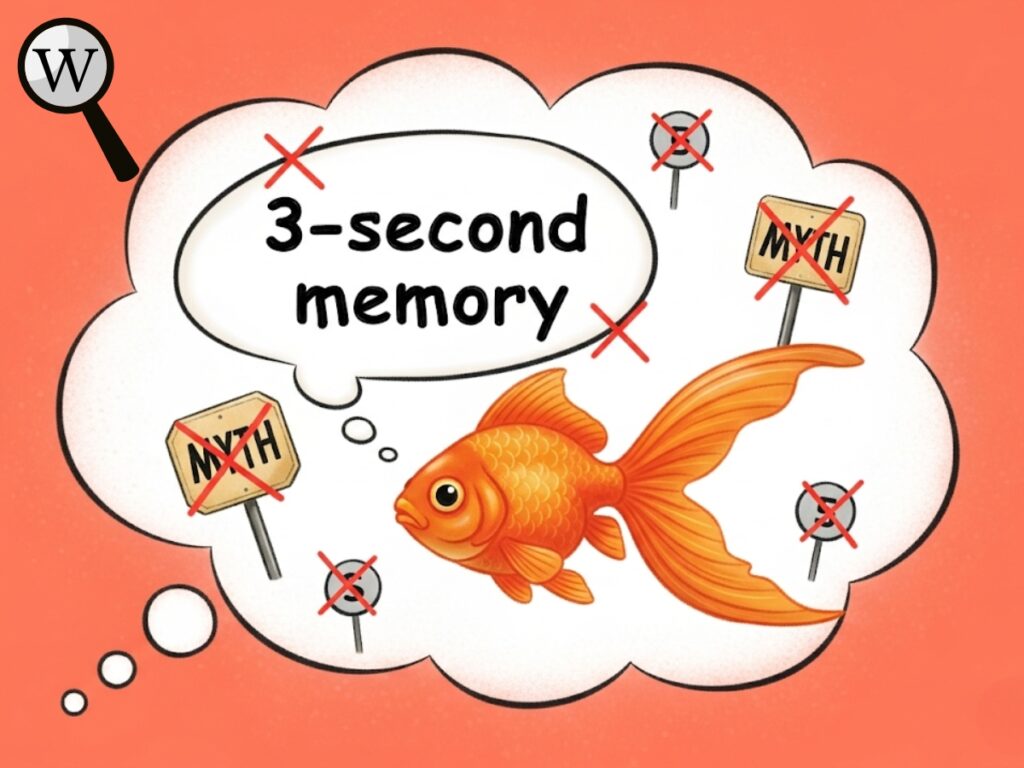
This idea didn’t come from scientific research — it likely stemmed from assumptions and casual observation. While no one can pinpoint its exact origin, several factors explain why the myth stuck:
🧠 Tiny brain = low intelligence?
People often equate small brain size with lack of smarts. But size isn’t everything — and that definitely applies here.
🥣 Boring homes make boring pets.
Many are kept in plain, unstimulating bowls. In such environments, almost any creature would seem unresponsive or forgetful. The lack of visible activity gave people the wrong impression.
🗣️ It’s a catchy phrase.
“You have the memory of a goldfish” is short, funny, and easy to repeat — but being popular doesn’t make it accurate.
Like many myths, repetition gave it life — but science has thoroughly debunked it.
🐟 Goldfish Are Smarter Than You Think
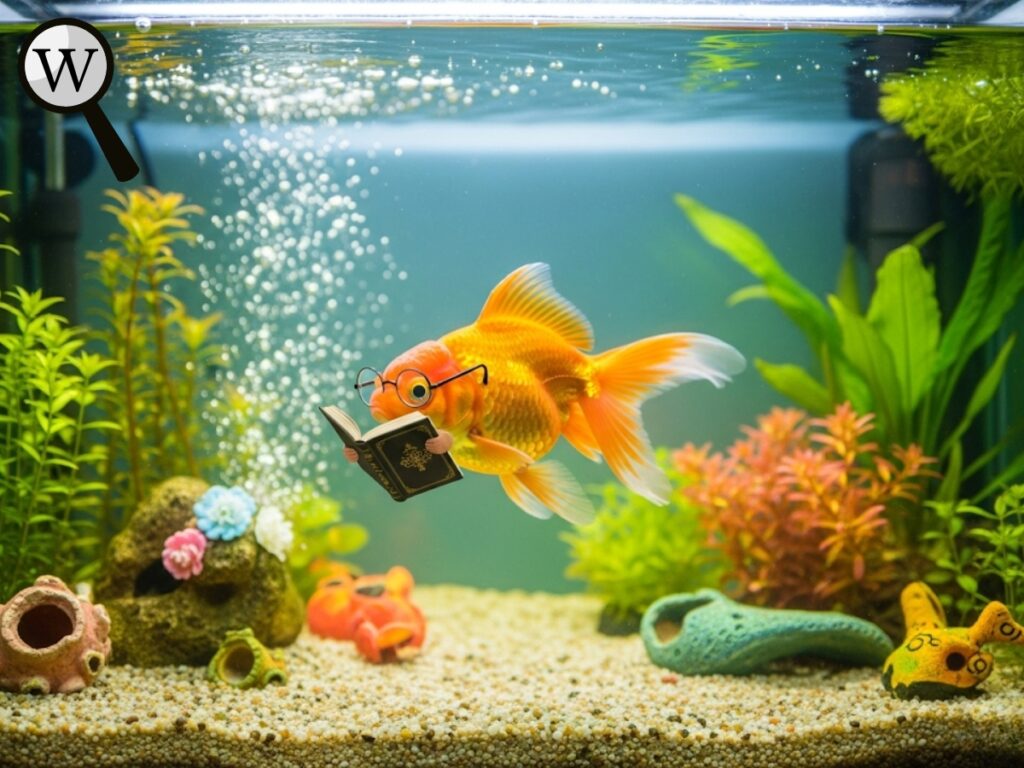
Once you look past the common myth, you’ll find that these little swimmers are actually curious, responsive, and surprisingly intelligent.
Here’s what researchers and long-time fish owners have observed:
👀 Recognize their owners – They can distinguish between familiar faces and strangers, often swimming to the surface when their human approaches.
🧩 Navigate mazes – With consistent training, they’re able to solve simple puzzles and remember the correct path.
🔁 Learn routines – When fed at the same time each day, they begin to anticipate mealtime and even show excitement.
🎯 Associate patterns and responses – These aquatic learners can connect specific sounds, colors, or actions with food rewards.
🎨 Distinguish shapes and colors – They’re able to identify and choose between visual elements, a clear sign of memory and recognition.
So the next time someone says, “You’ve got the memory of a goldfish,” maybe just smile and say:
“Thanks — they’re smarter than you think!”
🌊 Goldfish Have Emotions… Kind Of
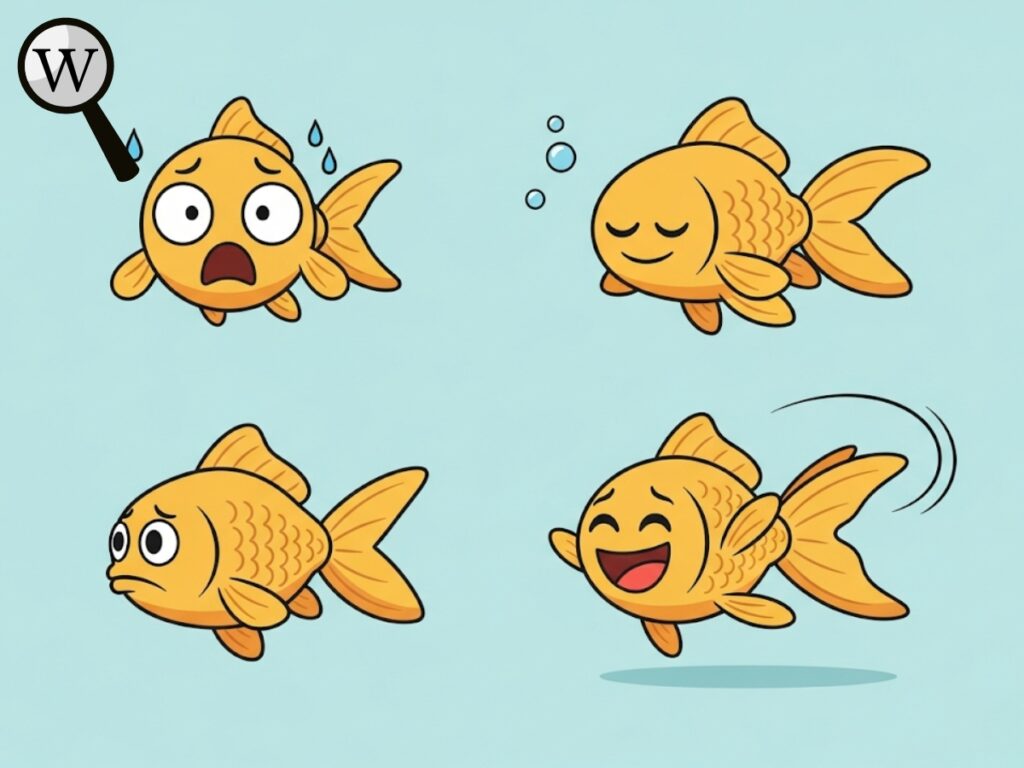
While their emotions may not mirror human feelings, studies suggest that these creatures experience basic states such as:
- Stress (e.g., from sudden movements or loud noises)
- Comfort (when in enriched, stable environments)
- Fear (when sensing predators or unfamiliar stimuli)
- Preference (toward certain activities, areas, or routines)
Some have even been observed “begging” for food — swimming energetically toward their humans, a behavior that suggests memory, expectation, and maybe even excitement.
No, they won’t tear up at a sad movie — but they’re far from emotionally blank.
🧬 Goldfish Are Incredibly Adaptable
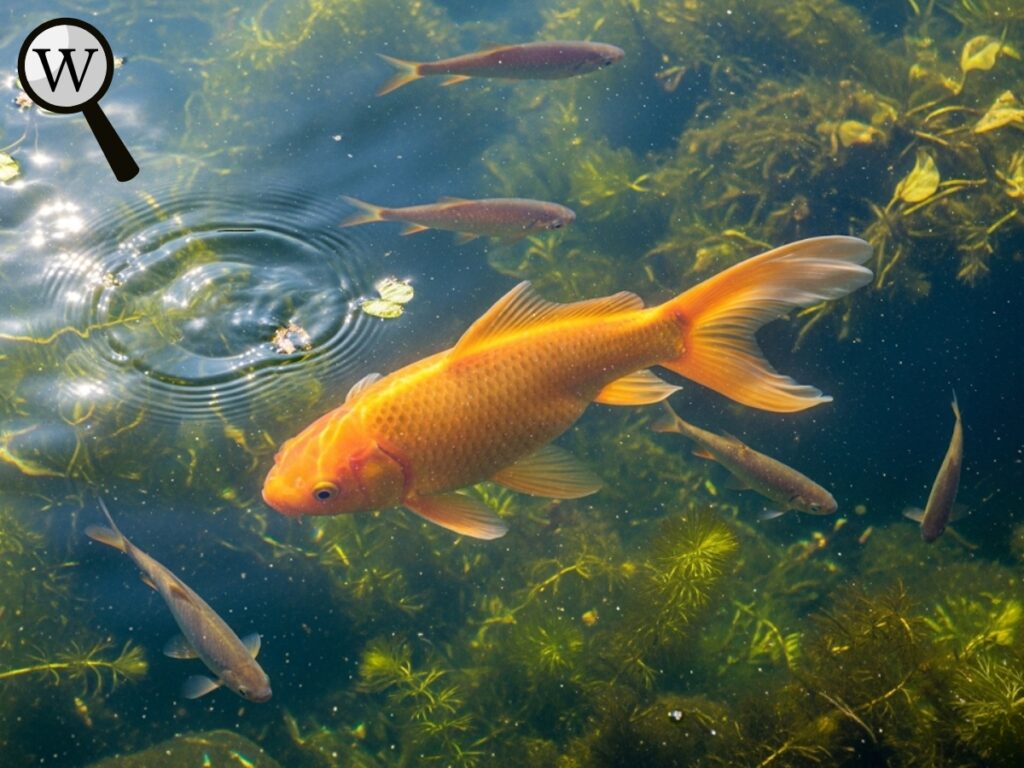
Goldfish are hardy survivors — which makes them one of the most widespread pet fish in the world. But here’s the twist: in the wild, goldfish that are released into lakes or rivers (which is strongly discouraged) can:
- Grow over 12 inches long
- Live for over 20 years
- Adapt to different temperatures, food sources, and water types
There are documented cases where goldfish released into the wild have grown massive and disrupted local ecosystems — not because they’re dangerous, but because they’re that resilient and adaptable.
Fun fact: The oldest recorded goldfish lived 43 years!
👶 Goldfish Were Bred for Beauty — Not Intelligence (But Got Both)
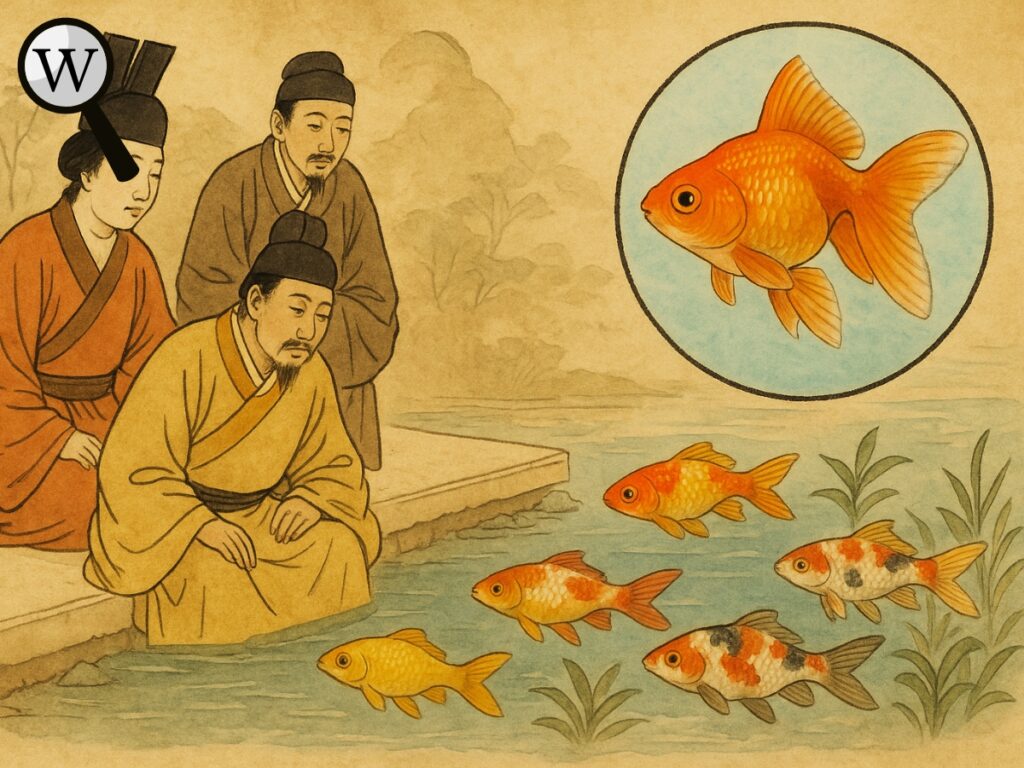
It weren’t originally meant to be pets. Thousands of years ago in ancient China, wild carp with unusual colors were selectively bred by royals to create the golden varieties we see today.
What’s surprising is that even though they were bred for appearance, they retained a complex nervous system and solid learning abilities.
In other words: they’re not just pretty — they’re smart too.
🚫 Why the Goldfish Bowl is Actually a Bad Idea
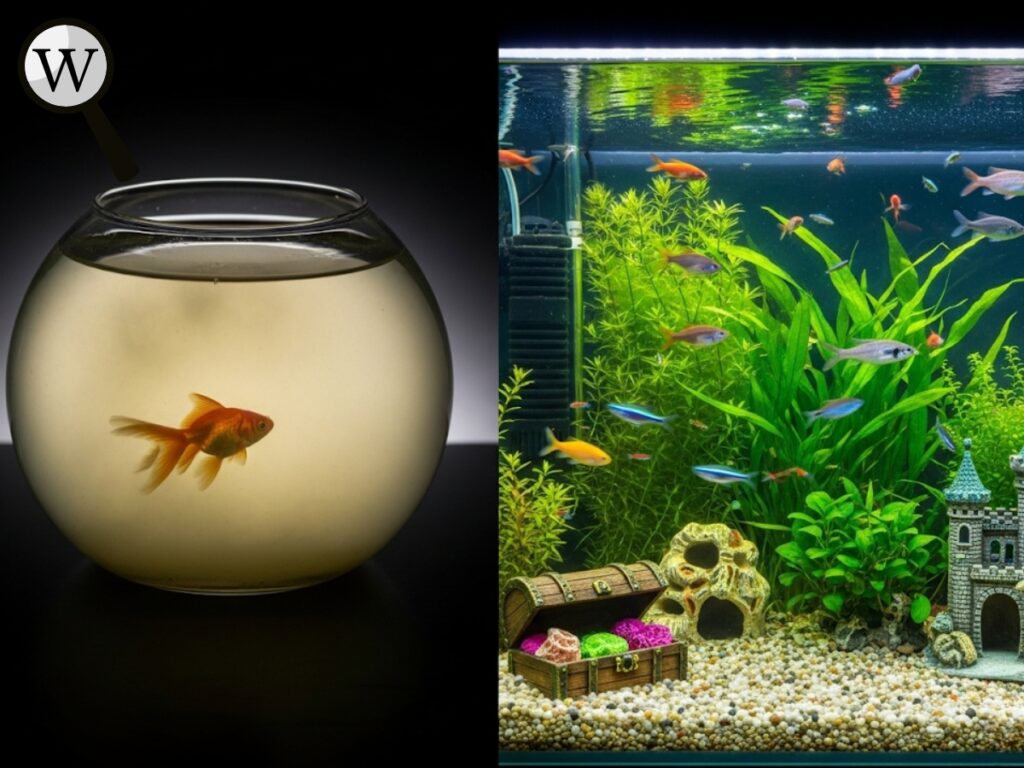
The bowls might be iconic, but they’re not ideal. These small, round containers:
- Don’t allow enough oxygen
- Limit swimming space
- Get dirty quickly
- Lead to boredom and poor health
These fish thrive in filtered aquariums with enrichment, like plants, pebbles, and hiding spots. When kept in a healthy environment, their intelligence — and memory — really shine.
💡 Final Thoughts: Don’t Underestimate this fish
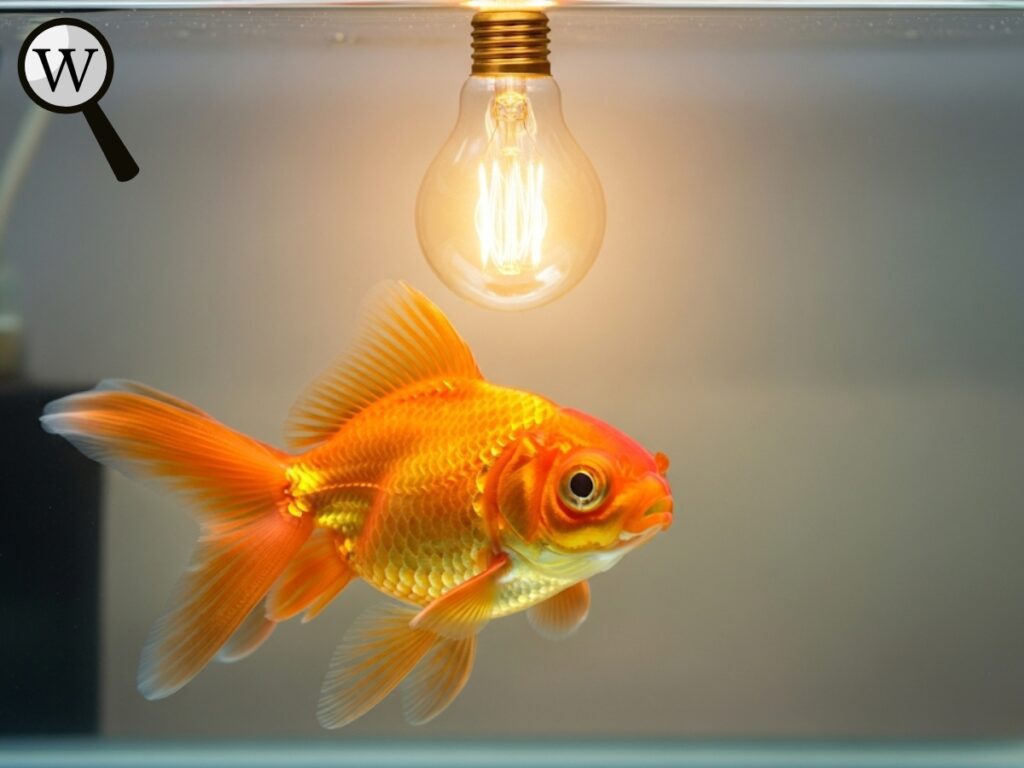
The goldfish memory myth is a great example of how underestimating nature can lead to totally false beliefs. Goldfish aren’t just decorative swimmers — they’re learners, problem-solvers, and pretty awesome pets (when treated right).
Let’s give them the credit they deserve — and stop spreading outdated myths.
Check out our category for more fun facts and myths about animals.

